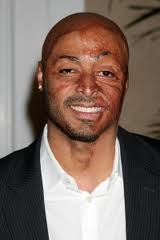Once the final script is
approved, actors are brought into a recording studio. They read the script’s
dialogue. It may seem odd to do this before the artwork is created. You might
expect that the drawing would be done first, and the voices added later.
Actually, it’s much easier to sync, or adapt, the pictures to the words than
the other way around. This process helps animators match the characters’
expressions and gestures to the actors’ sounds. Let’s say Homer has just
dropped a donut into a fish tank. As he reaches to pull the donut out, a dish
bites his hand. The actor performing Homer’s voice lets out a long howl to show
that Homer is in deep pain. The animators will listen carefully to this howl.
They will figure out just how to animate Homer’s mouth. The length of Homer’s
howl will also tell them how many pictures they need to draw.
In Japanese cartoons that are
dubbed for English-speaking audiences, such as Pokemon, characters’ words don’t
always match the shapes their mouths are making. This is because the cartoon
was originally created from a Japanese script. English words were dubbed in
later. What might be a short sentence in English could be a long one in
Japanese.
As the dialogue is being recorded,
some basic art is being prepared. For instance, if a new character is
introduced in the story, a designer will sketch what this character looks like.
The designer will draw several different poses of this new character creating
what is known as a model sheet. The same thing is done form a new setting. For
instance, if a circus is part of the story, an artist will design the circus.
Trade SecretFor many reasons, cartoon characters may go through makeovers. Some of Bugs Bunny’s antics used to “bug” Bug’s viewers. So the warner Brothers studio decided that Bugs’s playfulness should be less annoying. Also, they asked animators to redraw him, to reflect his gentler nature. Characters may also be updated to reflect contemporary art tastes. If you compare today’s Batmen cartoons to those of the 1970s, you’d hardly recognize the Dark Knight!
Storyboards
After the dialogue is recorded,
it’s time to draw storyboards. Storyboards are the animators’ road map. They
look a lot like comic strips. Storyboards break the scipt down into a series of
many small, still pictures. These pictures show how the action described in the
script should look in the final cartoon. The script’s dialogue is usually
written under the pictures of the storyboard. The storyboarding process has
become the standard way of making animation. It was popularized by the Walt Disney Studios in the 1940s.
Ralph Hulett working at Walt
Disney
Step by Step
Once the storyboards are
finished, the pencil artists can do their job. These artist draw the key, or
main, actions in a cartoon. For instance, if Bart Simpson is skateboarding don
a bill, the pencil artist will draw Bart at the top, middle and bottom of this
hill.
Since animation is made up of
twenty-four separate images per second, there are still many drawings that need
to be created. These are drawn by artists called in-betweeners. You might be
able to guess what their job is. In-betweeners create the many drawings that
fit “in between” the key actions.
After the pencil-line drawings of
the moving characters are created, they are traced over in ink using a brush or
a pen. These inked drawings are then transferred to clear plastic sheets. These
illustrated sheets are called cels. Cel, short for celluloid, is a transparent sheet on which objects are drawn on painted for traditional, hand-drawn animation. it was used during the first half of the 20th century.
Next, each cel is colored. The
colors add energy and richness to the previously black-and-white images. The
colors can be painted in with a brush. Today, thouh animators are frequently
using computers, not brushed, to color their artwork.
Backgrounds are the scenery over
which animated characters appear to move. They are usually drawn on some type
of art board, similar to the ones used in schools. Some backgrounds, however,
can be as simple as a sheet of white paper. For an animated series, the
backgrounds are usually more collaborate.
The cels are carefully placed
over the background. They are then photographed one cel at a time. For
instance, animators end up with many still photos of Bart Simpson skateboarding
down the hill. Each still frame differs ever so slightly from the one before.
When the stills are viewed by audiences, they see the smooth motion of Bert
zooming along.
Timing is Everything
An important part of making a
cartoon is timing. Timing determines how many frames each action will take. If
Bart is skating down the hill very fast, fewer frames will be needed to show
his action. If he’s just strolling slowly, more frames will be needed. Special
timing sheets and computer programs help animators figure out exactly how long
each scene will take to play out. Time lets animators know just how many
separate drawings each action will require. Perfect timing gives the series of
frames a great flow.





0 Comments